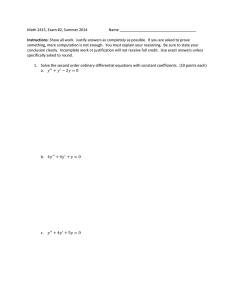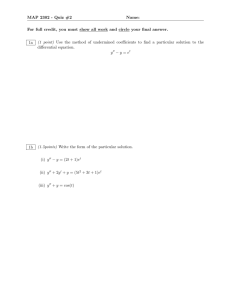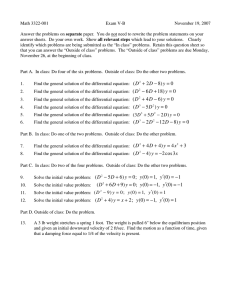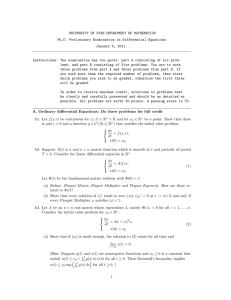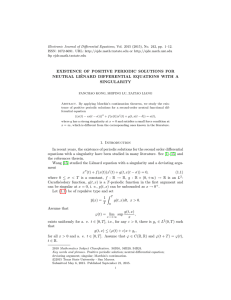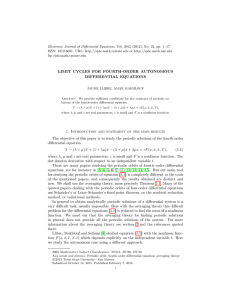18.034 Problem Set 4 Due Monday, March 6 in class.
advertisement
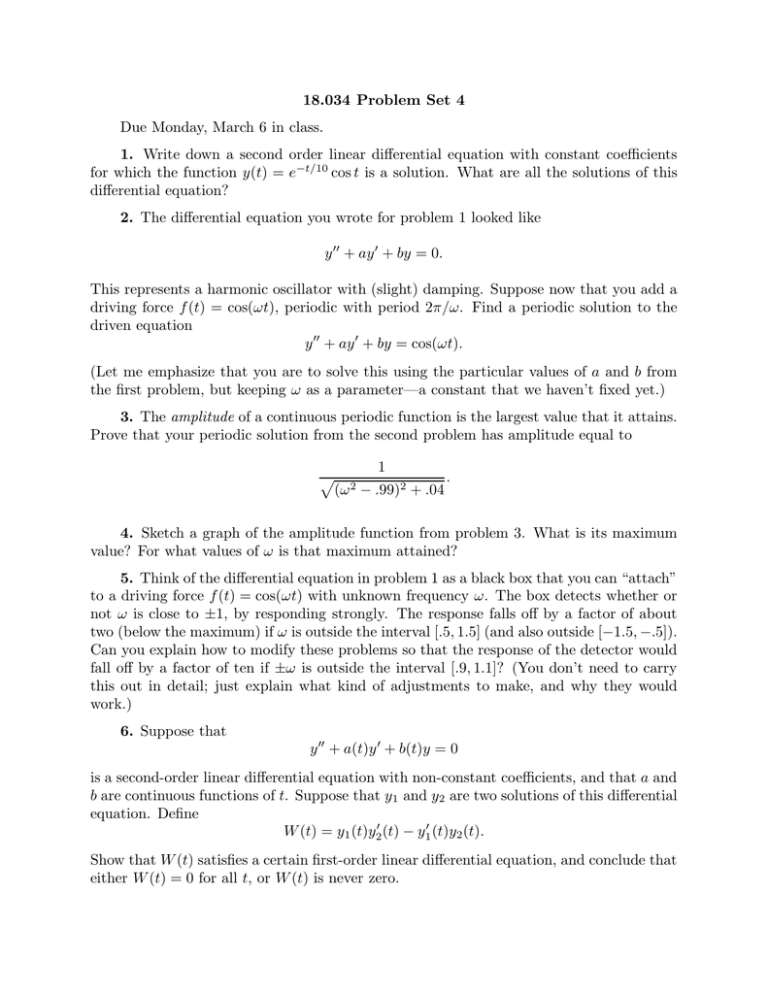
18.034 Problem Set 4 Due Monday, March 6 in class. 1. Write down a second order linear differential equation with constant coefficients for which the function y(t) = e−t/10 cos t is a solution. What are all the solutions of this differential equation? 2. The differential equation you wrote for problem 1 looked like y 00 + ay 0 + by = 0. This represents a harmonic oscillator with (slight) damping. Suppose now that you add a driving force f (t) = cos(ωt), periodic with period 2π/ω. Find a periodic solution to the driven equation y 00 + ay 0 + by = cos(ωt). (Let me emphasize that you are to solve this using the particular values of a and b from the first problem, but keeping ω as a parameter—a constant that we haven’t fixed yet.) 3. The amplitude of a continuous periodic function is the largest value that it attains. Prove that your periodic solution from the second problem has amplitude equal to 1 p . 2 (ω − .99)2 + .04 4. Sketch a graph of the amplitude function from problem 3. What is its maximum value? For what values of ω is that maximum attained? 5. Think of the differential equation in problem 1 as a black box that you can “attach” to a driving force f (t) = cos(ωt) with unknown frequency ω. The box detects whether or not ω is close to ±1, by responding strongly. The response falls off by a factor of about two (below the maximum) if ω is outside the interval [.5, 1.5] (and also outside [−1.5, −.5]). Can you explain how to modify these problems so that the response of the detector would fall off by a factor of ten if ±ω is outside the interval [.9, 1.1]? (You don’t need to carry this out in detail; just explain what kind of adjustments to make, and why they would work.) 6. Suppose that y 00 + a(t)y 0 + b(t)y = 0 is a second-order linear differential equation with non-constant coefficients, and that a and b are continuous functions of t. Suppose that y1 and y2 are two solutions of this differential equation. Define W (t) = y1 (t)y20 (t) − y10 (t)y2 (t). Show that W (t) satisfies a certain first-order linear differential equation, and conclude that either W (t) = 0 for all t, or W (t) is never zero.


